![A9 to A10_
Key Changes You Need to Know[99]](https://www.data4amazon.com/blog/wp-content/uploads/2025/10/Main-Banner-A9-to-A10_
Key-Changes-You-Need-to-Know99.jpg)
If your Amazon products are not appearing in search results or have suddenly dropped in rankings, the reason can be the A10 algorithm. Amazon’s A10 algorithm update has made rankings more volatile, shifting the focus to factors such as external traffic, seller authority, and customer engagement. Let’s understand how this change in algorithm is impacting your rankings and what Amazon SEO best practices you must follow to improve product discoverability.
Table of Content
- What’s Changed in A10 Algorithm Update and How To Optimize Your Listings Now
- Key Drivers Behind the Amazon A10 Algorithm Update
- Amazon A9 vs A10 Algorithm: Key Differences
- Amazon A10 Ranking Factors Explained: Top Influencing Factors
- Focus Shift towards Organic Sales and Order Velocity
- Importance of Customer Engagement
- Role of External Traffic in Rankings
- Impact of Seller Authority & Reputation
- Account Health Impact on A10 Algorithm Performance
- Category Authority vs Brand Authority in Amazon A10 Rankings
- Amazon Best Seller Rank (BSR) Impact on A10 Algorithm
- Amazon SEO Trends in 2026
- How to Optimize for Amazon A10 Algorithm: SEO Best Practices
- Amazon Listing Optimization Strategies
- Amazon PPC Optimization Tips
- Social Media Integration with Amazon SEO Strategy
- Amazon Conversion Rate Optimization Tips
- Amazon Seller Reputation Management
- Amazon Content Personalization
- Customer Retention Strategies
- Performance Monitoring & Iterative Optimization
- The Future of Amazon SEO is Customer-Centric: Optimize for the A10 Algorithm to Drive Long-Term Growth
What’s Changed in A10 Algorithm Update and How To Optimize Your Listings Now
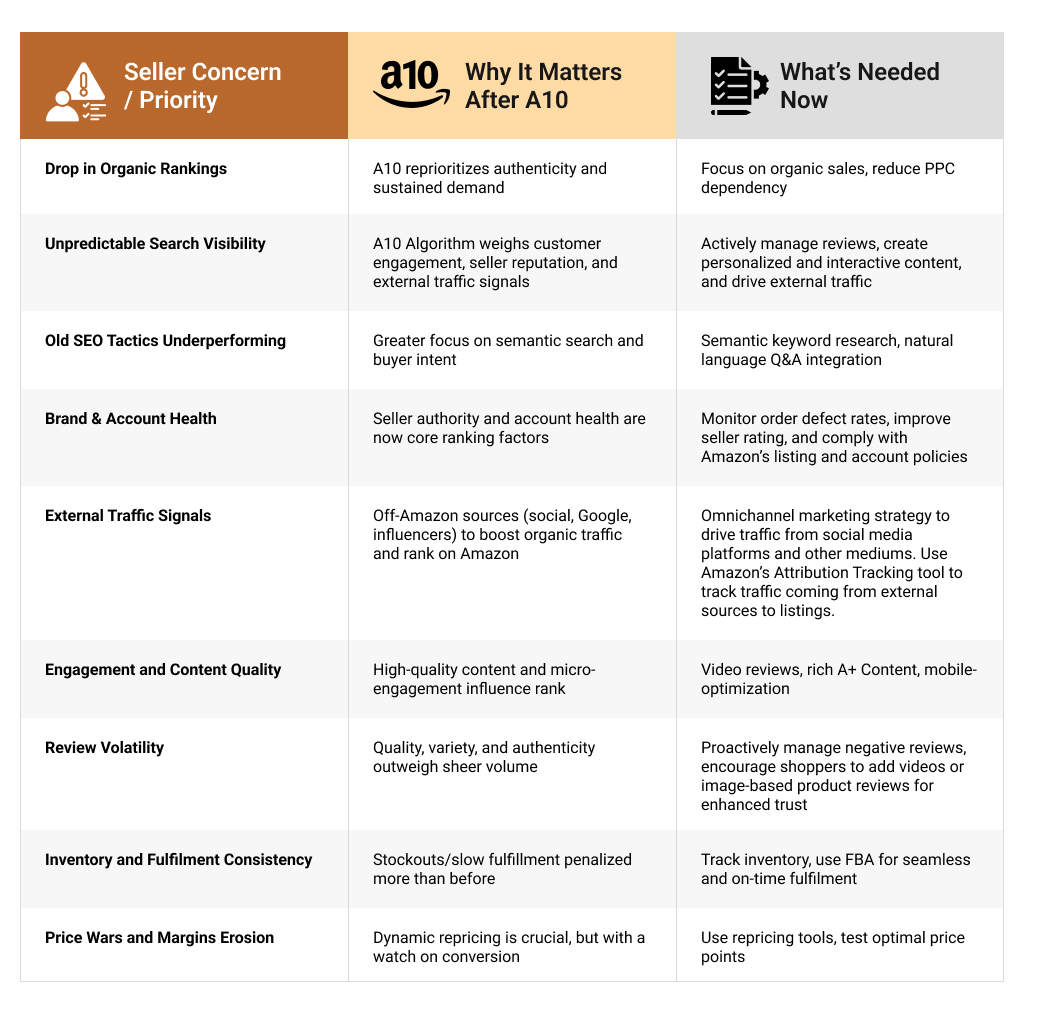
Key Drivers Behind the Amazon A10 Algorithm Update
While A9 served as the backbone of Amazon’s search engine for years, it had several shortcomings that became increasingly apparent as the customers’ search behavior and the eCommerce landscape evolved in the last few years. Here’s why the update to A10 was not just inevitable but essential:
1. A9’s Reliance on Keyword Matching Alone Was No Longer Sufficient
Amazon A9 heavily relied on keyword matching. The algorithm matched search queries with listings that had closely related keywords optimized in bullets, titles, and product descriptions. A relevance score was provided to Amazon listings based on how closely the keywords in the product pages match the search queries. This approach makes it easier for sellers to manipulate rankings by stuffing keywords or specific search terms into their listings, regardless of the actual product quality or relevance to the customer’s intent.
2. Lack of External Signals Contributing Towards Organic Traffic Coming to Amazon
Amazon’s ecosystem has rapidly expanded beyond its native platform, with buyers increasingly researching products on Google and social media platforms before making purchases on Amazon. In the A9 algorithm, these external factors were not taken into consideration when determining organic rankings on Amazon, even though they are crucial indicators of buyer intent and product authority. That is why in the Amazon A10 algorithm, a significant importance is provided to external traffic, prioritizing engagement from outside Amazon as a key ranking factor.
3. Need for Deeper Seller Accountability
Amazon’s A9 algorithm did not sufficiently prioritize seller performance metrics like account health, customer service quality, and fulfillment reliability. As a result, some low-quality sellers managed to gain disproportionate visibility. The new A10 system introduces stronger checks on seller reputation and operational excellence as core ranking signals.
4. The Rising “Paid Promotion Trap” on Amazon to Boost Rankings
The A9 algorithm’s core principle was to predict which products were most likely to be purchased by customers, and high sales velocity was a significant factor in determining this likelihood. Sellers started leveraging Amazon PPC as an effective way to boost their sales and eventually rankings in A9. This growing reliance on Amazon PPC created a cycle where sellers had to invest heavily in ads to maintain visibility, driving up costs and reinforcing the need for a more dynamic solution.
5. Limited Focus on Customer Engagement and Behavior Patterns
A9 focused primarily on keyword relevance, without considering how customers interacted with listings. It lacked the ability to understand customer intent or behavior, such as clicks, conversions, or browsing patterns, which are critical for delivering a more personalized and relevant search experience.
Amazon A9 vs A10 Algorithm: Key Differences
| Aspect | Amazon A9 Algorithm (Legacy) | Amazon A10 Algorithm (Current) |
|---|---|---|
| Core Focus | Keyword matching + Sales velocity | User behavior + Engagement metrics + Product relevance + Seller authority |
| Influencing Ranking Factors | Keywords, CTR, and Conversion rates, Reviews, Stock availability, Pricing | Seller reputation, CTR & Conversion rates, Product quality, External traffic, Keyword relevance with user intent |
| Use of External Data | Minimal consideration of traffic or engagement from outside Amazon | Strong emphasis on external traffic sources like social media, Google, and other search engines |
| Keyword Relevance | Exact match priority | Semantic & contextual matching |
| Seller Authority | Limited impact | Significant ranking factors (Best Seller Rank, Order Defect Rate, and Late Shipment Rate directly affecting ranking) |
| PPC Influence | High direct impact | Organic rankings are prioritized with paid ads supplementing visibility rather than dominating |
| User Engagement | The focus was primarily on CTR | Along with CTR, other metrics like page views and session time also influence ranking |
| Personalization | Limited personalization based on search query and past sales data. | Advanced personalization, considering user behavior, shopping preferences, browsing history, and other demographics for tailored results |
| User Intent Understanding | Limited semantic understanding of queries | Greater emphasis on semantic search, user intent, and natural language processing |
| Best Seller Rank (BSR) Role | Primarily sales velocity-driven | BSR is integrated with repeat purchase rates, review quality, and sustained organic engagement |
Amazon’s A9 and A10 algorithms share core principles like keyword relevance, sales velocity, and product reviews as ranking factors. However, A10 introduces significant improvements: it places stronger emphasis on seller reputation, external traffic, user engagement, and AI-driven personalization to better match buyer intent and ensure higher-quality, trustworthy search results.
![New_Common Ranking Factors[78]](https://www.data4amazon.com/blog/wp-content/uploads/2025/10/Infographic_-New_Common-Ranking-Factors78-1024x678.jpg)
Amazon A10 Ranking Factors Explained: Top Influencing Factors
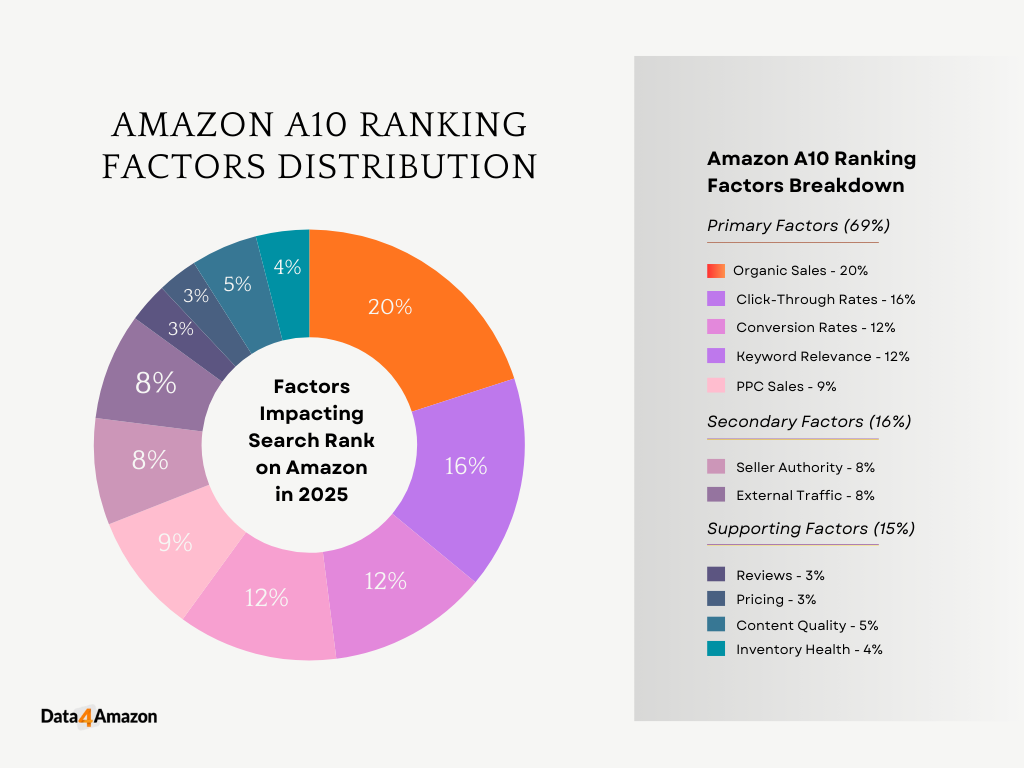
1. Focus Shifted towards Organic Sales and Order Velocity
The A10 algorithm has shifted the spotlight from paid advertising to organic sales and order velocity. The latest algorithm prioritizes products that consistently generate steady sales over time. However, that doesn’t mean that Amazon PPC is obsolete now. To increase order velocity and ultimately the organic ranking of the product, Amazon PPC remains a valid option. PPC ads can help boost your product’s visibility and sales, which can indirectly affect the A10 algorithm. If your product gets more sales from PPC ads, it can lead to better organic rankings because the A10 algorithm favors products that sell well.
What Amazon Sellers Need to Do:
To improve their rankings on Amazon, sellers must prioritize creating product listings that convert naturally — through optimized keywords, compelling content, competitive pricing, and solid review profiles. Additionally, they can leverage Amazon PPC to build sustainable organic sales momentum.
2. Importance of Customer Engagement
Customer engagement is now a key ranking factor in A10. Unlike A9, which relied heavily on keyword relevance, A10 prioritizes how shoppers interact with listings. Clicks, add-to-carts, time spent on page, and even repeat purchases are now critical signals that indicate product relevance to Amazon. These metrics represent authentic buyer interest and satisfaction, helping the algorithm identify high-quality listings that foster stronger shopper trust and interaction.
What Amazon Sellers Need to Do:
Invest in creating interactive content such as FAQs, 360-degree product views, and user-generated content to enhance engagement. The more interactive and authoritative elements you incorporate into your listings, the more likely customers are to spend time on your page, boosting page views, session time, and click-through rates. Leverage data-driven insights from tools like Amazon Brand Analytics to understand exactly what your customers are searching for. Tailor your listings accordingly to ensure they are aligned with customer needs, further increasing the likelihood of conversion.
3. Role of External Traffic in Rankings
Only 56% of Amazon traffic comes from its internal search. The rest? It comes from external media like Google, YouTube, and social media platforms (Facebook, TikTok, Instagram, etc).
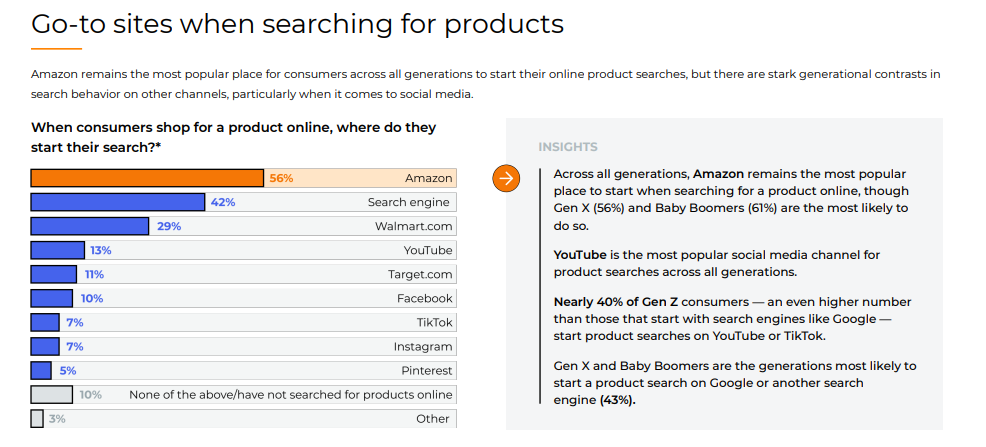
Amazon views traffic from these channels as a signal of product popularity and demand. Thus, through its Brand Referral Program, Amazon is even directly encouraging brand-registered sellers to drive external traffic to their Amazon product listings. Under this program, Amazon gives sellers a bonus (average of 10% of sales generated from external traffic) for building and nurturing their customer relationships outside of Amazon, encouraging brands to invest in driving their own customers to Amazon, rather than relying solely on the marketplace’s paid advertising or organic search.
What Amazon Sellers Need to Do:
Create an omnichannel content marketing strategy to drive qualified traffic from non-Amazon channels (such as external search, social media, display ads, video ads, email marketing, affiliate/influencer campaigns). Leveraging influencer and affiliate marketing to drive external traffic to Amazon listings is also a good strategy, followed by several successful sellers. Through Amazon Attribution (a free tool for brand-registered sellers), sellers can demonstrate the connection between their non-Amazon marketing efforts and conversion performance, giving Amazon clear visibility into their traffic quality and source diversity.
4. Impact of Seller Authority & Reputation
Seller Authority is one of the most critical Amazon A10 ranking factors, working as a trust multiplier that can either amplify or diminish the effectiveness of other optimization efforts. Amazon believes that sellers with strong, consistent reputations are more likely to offer a reliable, satisfying customer experience. Hence, now all the crucial metrics like seller feedback scores, account age, order defect rates, late shipment rates, and customer service are taken into consideration by Amazon to determine a seller’s authority.
What Amazon Sellers Need to Do:
Sellers must focus on improving their overall authority by providing prompt customer service and on-time fulfilment. Also, they should audit underperforming products that may be dragging down overall authority scores, implement strategic product retirement for consistently problematic items, and ensure new launches meet established quality standards before introduction to reduce order defect rate.
5. Account Health Impact on A10 Algorithm Performance
Amazon’s Account Health Rating (AHR) is a critical metric that helps track whether a seller is complying with the marketplace’s policies. To all new sellers, Amazon assigns a score of 200 as their Account Health Rating. This score then fluctuates due to several factors (like listing health, policy violation, sales volume in a rolling 180-day window). As your listings get suspended, policy violation happens, or sales volume lowers significantly, the score drops below 200, and your account is at risk of deactivation.
Green – When the score is 200 or higher, the account is in a “healthy” state.
Yellow – When the score falls below 200, but remains above 100, this is considered “At Risk”.
Red – When the score falls below 100, the account is “eligible for deactivation”.
However, the good thing is that the A10 algorithm doesn’t treat account health as a simple pass/fail gate. Instead, it creates dynamic performance modifiers that adjust ranking calculations in real-time. A seller dropping from 98% to 96% health doesn’t face immediate ranking penalties, but experiences reduced ranking acceleration and longer recovery times from competitive pressure.
What Amazon Sellers Need to Do:
The most important thing to do is to address the highest-impact policy violations first to improve the AHR score. If you have suppressed listings, reinstating them should be your number one priority, as once the suspended ASINs are successfully recovered, your AHR score will be back to the normal range. Sometimes, the AHR score still fluctuates even in the absence of any policy violations. This is likely due to lower sales volume in the last 180 days. Thus, to maintain positive AHR, focus on improving your sales velocity and fulfilling orders on time.
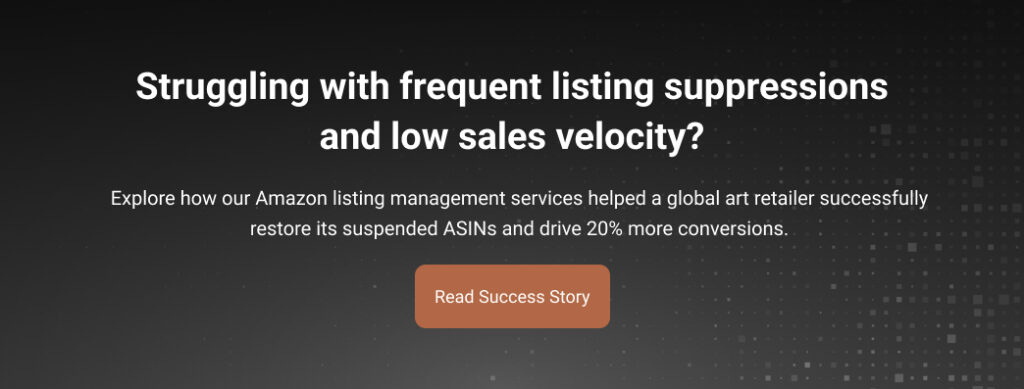
6. Category Authority vs Brand Authority in Amazon A10 Rankings
Amazon A10 considers both category authority and brand authority as part of its ranking process.
Category authority measures how well a product fits within its category and how it competes with other products in that category. A strong category authority results from top sales performance, conversion rates, and customer satisfaction within that niche.
Brand authority, on the other hand, is determined by the reputation of the seller’s brand and its recognition in the marketplace. A stronger brand authority is determined by seller performance metrics, customer reviews and ratings, wide catalog offerings, and effective branding.
Both authorities contribute synergistically to improve Amazon rankings. A high-performing product (strong category authority) boosts a brand’s overall standing, and a strong brand (high brand authority) can then funnel more traffic and trust to its individual products, creating a virtuous cycle.
What Amazon Sellers Need to Do:
Sellers must engage in brand-building efforts such as enrolling in Amazon Brand Registry, fostering community engagement, and creating a positive customer experience. Additionally, they must prioritize accurate parent-child relationships for all ASINs. Amazon listings must be optimized to align with the most appropriate categories and attributes to ensure products are grouped with relevant items.
7. Amazon Best Seller Rank (BSR) Impact on A10 Algorithm
BSR has evolved from a simple sales popularity metric to a sophisticated authority signal under the Amazon A10 algorithm. It is calculated using sales volume data (both recent sales and all-time sales). The lower the BSR, the higher the product ranks in the Amazon Best Sellers lists. BSR reflects the relative sales performance of a product within its specific category or subcategory, and is evaluated in a more holistic context under the Amazon A10 algorithm:
- Multidimensional Signal: Rather than only measuring raw sales, A10 views BSR as a proxy for organic demand, buyer satisfaction, and product authority within a niche.
- Not the Sole Driver: High BSR boosts visibility, but products with low return rates, strong repeat customer rates, and good engagement can now sometimes outrank a temporarily higher BSR competitor.
- Organic Emphasis: Sustained improvements in BSR through organic strategies—repeat business, positive reviews, and comprehensive listings—benefit A10 authority more than temporary PPC surges.
What Amazon Sellers Need to Do:
Sellers should focus on improving their sales velocity by leveraging strategies such as seasonal promotions, bundle offers, and price adjustments to drive organic demand. Consistently monitoring and optimizing Amazon product listings for conversion rate will also help boost BSR.
Key Takeaway:
While each Amazon A10 ranking factor operates with distinct algorithmic weights and measurement criteria, the algorithm doesn’t evaluate these factors in isolation. Instead, it creates compound effects where strong performance in one area enhances the impact of others. The key to success on Amazon lies in focusing on these four core pillars:
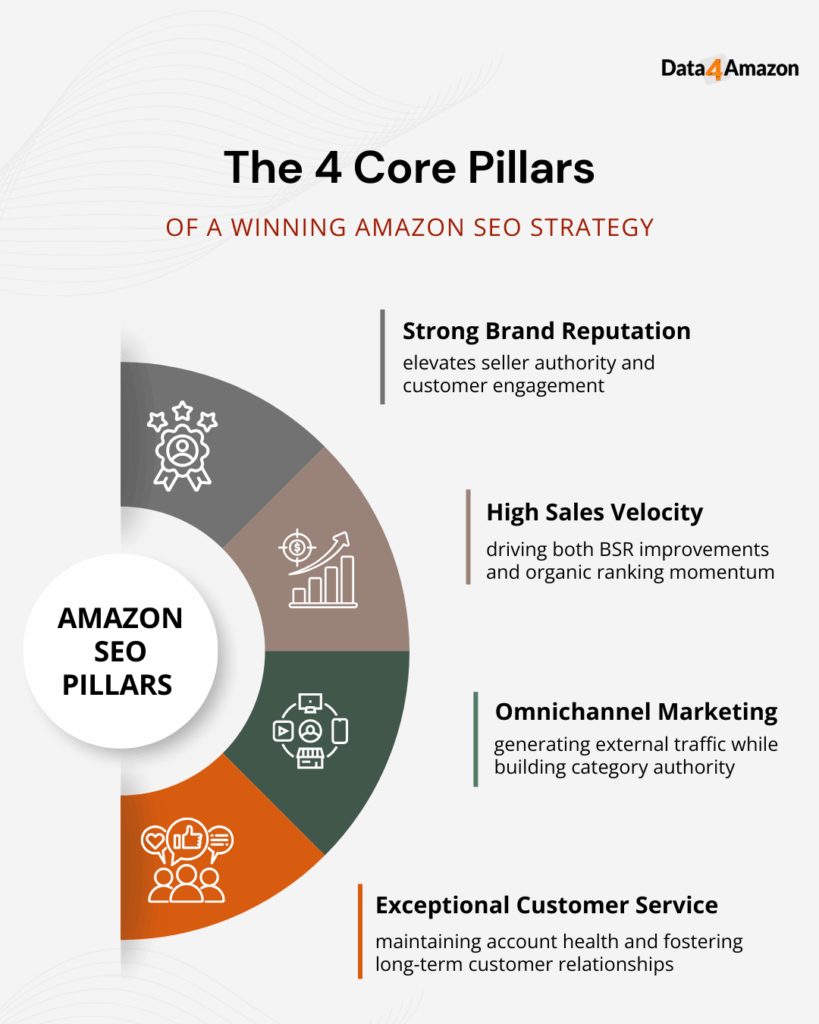
Amazon SEO Trends in 2026
As Amazon search evolves, so do the SEO trends. Some key trends that you must know to improve your Amazon SEO strategy in 2026 are:
1. Increased Use of AI and Personalization
The A10 algorithm utilizes AI and ML technologies to gain a deeper understanding of customer behavior and preferences, thereby personalizing search results based on individual shopping patterns. This means tailored product recommendations are more relevant than ever, and sellers must optimize listings for personalized experiences, focusing on delivering what the customer is most likely to purchase. In fact, in its case studies, Amazon has clearly demonstrated how brands like Lotte Mart and DFL increased their organic sales and session durations by 2-3x by using personalized content recommendations suggested by their tool, Amazon Personalize.
2. Video Reviews Take Over
As consumer trust in user-generated content grows, video reviews have become essential for higher engagement and conversions. Amazon always strives to deliver an authentic experience to customers, and now, to achieve this, they are placing greater emphasis on video reviews. In fact, according to JungleScout’s Consumer Trends Report 2024, 60% of Amazon shoppers are influenced by product reviews that include video or images.
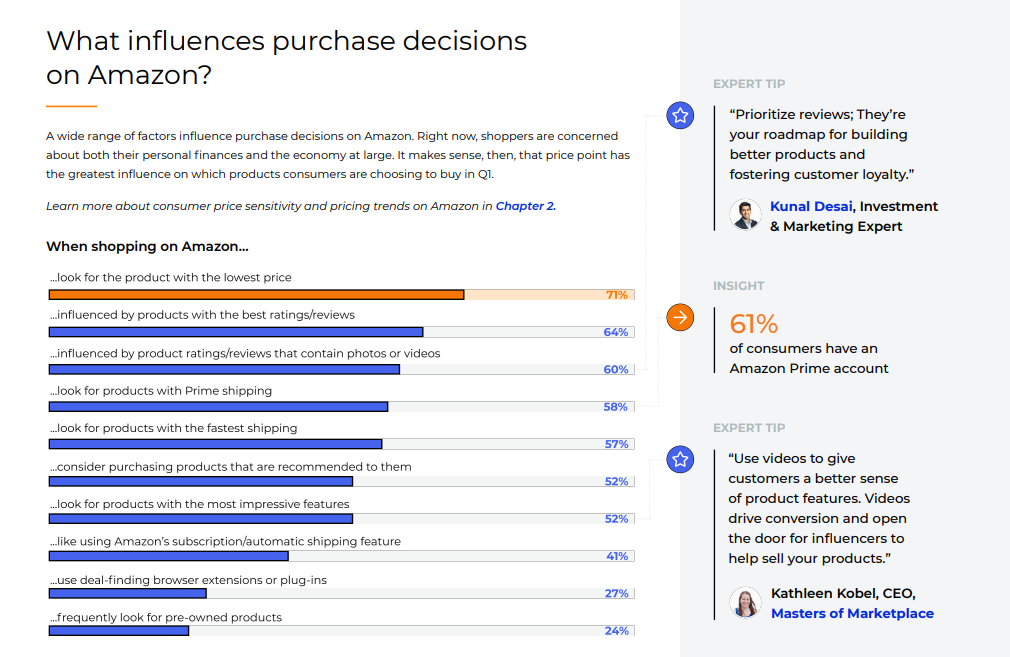
At the same time, the platform is giving more weight to recent reviews than older reviews. Based on how recent and authentic the review is, Amazon assigns star ratings in reviews for each product, thereby building customer trust.
3. Categorization of Searches by Intent Type
Amazon’s A10 algorithm is designed to interpret the underlying intent behind a user’s search query, categorizing it into different types, such as:
- Immediate Need: For example, a search for “toothpaste” indicates a direct purchase intent.
- Research: Queries like “best laptops under $1000” suggest the user is comparing options before making a decision.
- Gift Purchasing: Searches such as “gifts for mom” indicate a need for gift recommendations.
These categorizations help Amazon tailor search results to match the user’s intent more accurately. For instance, a user searching for “toothpaste” might see listings with quick shipping options and essential product information.
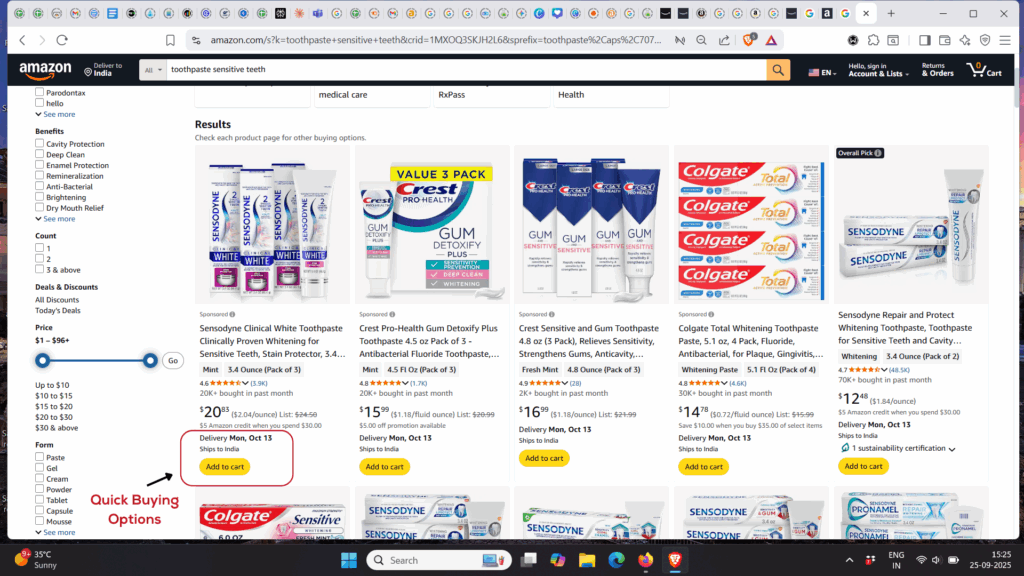
Whereas someone searching for “best laptops under $1000” might be presented with comparison charts, detailed reviews, and a range of options to aid in their research.
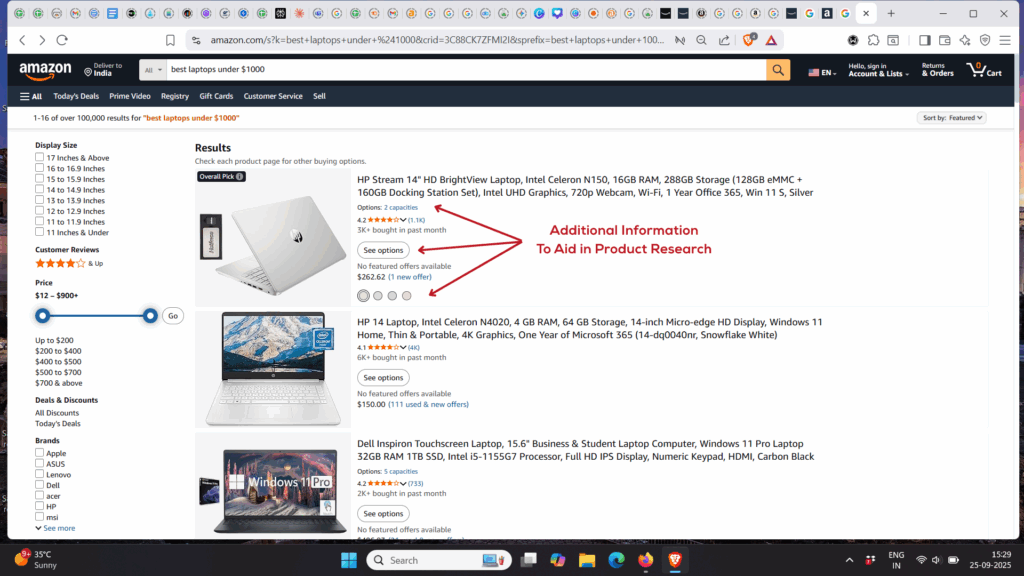
Thus, when optimizing or creating Amazon listings, it is critical to understand the user intent first, beyond the possible search queries, and add relevant elements accordingly on your product pages.
How to Optimize for Amazon A10 Algorithm: SEO Best Practices
As a leading Amazon SEO agency, we have worked with thousands of brands, developing new customer-focused, A-10 algorithm optimization strategies that improve their rankings, traffic, conversions, and seller authority for the long term. Drawing from our deep expertise, we’ve compiled a list of the best Amazon SEO practices that will help you strengthen your brand presence and visibility on the leading marketplace:
1. Amazon Listing Optimization Strategies
- Amazon Keyword Research: Move beyond exact-match keywords to include semantic variations and buyer-intent phrases. Use Amazon’s Rufus suggestions, Search term reports, and other keyword research tools (such as Helium10, Ahrefs, Semrush) to identify seed, long-tail, question-based, and conversational queries relevant to your product. Through Reverse ASIN Lookup, identify competitors’ top-performing keywords to add to your listings.
- Voice Search and Backend Term Optimization: Include natural language phrases customers use with Alexa devices. For example, “best coffee maker under 100 dollars” rather than “coffee maker $100”. Structure bullet points to answer common voice queries like “What are the dimensions?” or “Is this dishwasher safe?”
- Interactive A+ Content Integration on Product Pages: Amazon itself has confirmed that A+ content helps sellers increase their conversions by up 8%. So, if you are a Brand Registered seller, incorporate comparison charts, size guides, FAQ modules, and other interactive elements to increase user engagement and time-on-page. Create 60-90 second demonstration videos that showcase real-world product usage, or add 3D product models, lifestyle images, and high-quality infographics to enhance product understanding.
- Attribute Management and Product Categorization: Ensure that products are placed in the most accurate categories. Choose categories based on the highest search volume and the lowest competition rather than obvious product fits. Analyze top competitors’ category strategies for insights. Fill out all attribute fields (color, size, material, etc.) to improve Amazon’s ability to filter and categorize your product correctly.
- Optimization for Search Filters: Structure product variations with consistent naming conventions and complete attribute mapping across all child ASINs. Use exact color names Amazon recognizes in filters: “Navy Blue” instead of “Deep Ocean” to ensure proper filter inclusion. Add feature-based attributes such as “BPA-Free,” “Organic,” or “Made in USA” that trigger specific customer filter searches. Include detailed material composition and construction methods that customers commonly use for filtering.
- Technical Amazon SEO: Use structured data markup to enhance product information display in search results. Compress images to under 1MB while maintaining quality, and aim for listing load times under 3 seconds on mobile devices.
![Overwhelmed with the Amazon[16]](https://www.data4amazon.com/blog/wp-content/uploads/2025/10/CTA_-Overwhelmed-with-the-Amazon16-1024x389.jpg)
2. Amazon PPC Optimization Tips
- Experiment with Different Amazon Ad Formats: Run diversified Amazon PPC campaigns across Sponsored Products, Brands, and Display to see which one works best for you. Leverage Amazon DSP to retarget website visitors on Amazon, creating external traffic signals that boost organic rankings.
- Seasonal PPC Scaling: Increase PPC investment 90 days before peak seasons to build ranking momentum that carries through high-competition periods
- Bidding Optimization: Implement dynamic bidding based on organic ranking position – reduce bids as organic rankings improve to maintain profitability. Optimize bids with negative keywords and A/B test ads for better budget utilization.
- Keyword Harvesting: Use Amazon PPC campaigns to test keyword performance, then optimize organic listings with high-converting terms discovered through paid campaigns
- Video Ad Integration: Incorporate Sponsored Brand Video ads to increase engagement metrics and brand awareness simultaneously.

3. Social Media Integration with Amazon SEO Strategy
- Prioritize Omnichannel Marketing: To enhance external traffic, try distributing and promoting your content on multiple social media platforms, such as YouTube, TikTok, Facebook, Instagram, and Pinterest. Tailor content formats to each platform’s algorithm preferences while maintaining consistent brand messaging
- Social Proof Integration: Showcase user-generated content from social platforms directly in Amazon listings to increase trust and conversion rates.
- Attribution Tracking Setup: Implement Amazon Attribution links across all social media campaigns to measure true impact on Amazon rankings
- Content Marketing Strategy: Develop a comprehensive content marketing strategy that encompasses various content formats, including blogs, guides, product videos, infographics, GIFs, and more, to effectively promote your products across different social media platforms.
4. Amazon Conversion Rate Optimization Tips
- User Journey Analysis: Conduct deep analysis of shopper behavior on your Amazon pages, leveraging the Amazon Brand Analytics tool to identify drop-off points and friction areas that reduce conversion rates.
- Optimized Search-to-Checkout Flow: Simplify and streamline the path from product discovery to purchase by minimizing distractions and clearly defining CTAs within the listing and checkout processes.
- Personalized Product Recommendations: Integrate upsell and cross-sell opportunities that resonate with individual buyer preferences to increase Average Order Value (AOV).
- Mobile Experience Optimization: Ensure product pages and checkout workflows are fully optimized for mobile shoppers, reducing load times and navigation barriers.
5. Amazon Seller Reputation Management
- Feedback Management System: Implement automated follow-up sequences that encourage positive feedback while addressing negative experiences promptly.
- Return Policy Optimization: Implement hassle-free return processes that enhance customer satisfaction and minimize the likelihood of negative feedback.
- Policy Compliance Monitoring: Stay current with Amazon policy changes and implement compliance measures before enforcement actions occur.
- Proactive Issue Resolution: Identify and resolve potential problems before customers complain, reducing order defect rates and improving seller authority

6. Amazon Content Personalization
- Align Listing Content with Ad Funnel Stage: Develop content variants that focus on awareness (benefits-driven) versus decision-making (urgency, discount offers) to maximize conversions at each funnel phase.
- Leverage Generative AI Tools: Utilize Amazon’s generative AI features to create personalized A+ Content and product descriptions that feel authentic and buyer-relevant, while ensuring human refinement for brand consistency.
- Post-Purchase Content Customization: Send follow-up messages and emails with content tailored to the buyer’s purchase history, encouraging reviews, upsells, or usage tips.
- Regional Language & Seasonal Content Adaptation: Customize content, including keywords, FAQs, and features for regional preferences or multi-lingual markets to improve relevance and conversion. Update images, descriptions, and keywords in accordance with seasonal trends or holidays/events.

7. Customer Retention Strategies
- Post-Purchase Engagement: Leverage email marketing to nurture existing customers, providing product tips, complementary recommendations, and limited-time offers.
- Loyalty Program Integration: Create Amazon-compliant customer retention programs that encourage repeat purchases and brand loyalty. Sellers can utilize Amazon Moments to reward their customers for completing high-value actions in the app and website.
- Replenishment Reminder Systems: Utilize external email marketing to remind customers when consumable products need replacement.
8. Performance Monitoring & Iterative Optimization
- Amazon Account Monitoring via Tools: Leverage Amazon Brand Analytics, Seller Central Performance Dashboard, Amazon Advertising Console, and other third-party tools to track key metrics like CTR, Conversions, Engagement Rate, Session Time, CPC, RoAS, and ACoS.
- Weekly Performance Audits: Monitor keyword rankings, BSR position, conversion rates, and traffic sources for trend identification
- Account Health Monitoring: Set clear KPI benchmarks for account health, shipping reliability, feedback score, and late shipment rate—and take immediate action when metrics dip below target.
- Inventory Monitoring and Management: Frequently check inventory performance scores (IPI), address excess or stranded stock, and forecast restocks to prevent missed sales and storage fee spikes.
The Future of Amazon SEO is Customer-Centric: Optimize for the A10 Algorithm to Drive Long-Term Growth
A10 is Amazon’s most sell-friendly algorithm, rewarding authentic customer value over manipulation tactics. Unlike A9’s pay-to-play model, A10 creates genuine opportunities for sellers who focus on aligning user intent, optimizing search relevance, and strategically positioning their brand. This shift levels the playing field, allowing smaller sellers with superior customer experiences to compete effectively against established players relying solely on advertising spend. Sellers who embrace A10’s customer-centric approach will build sustainable competitive advantages through organic authority, external traffic integration, and exceptional customer engagement.
![Ready to Optimize for Amazon A10_[19]](https://www.data4amazon.com/blog/wp-content/uploads/2025/10/CTA_-Ready-to-Optimize-for-Amazon-A10_19-1024x389.jpg)
